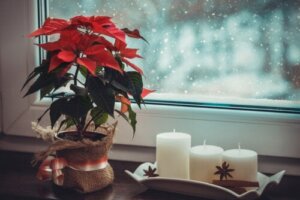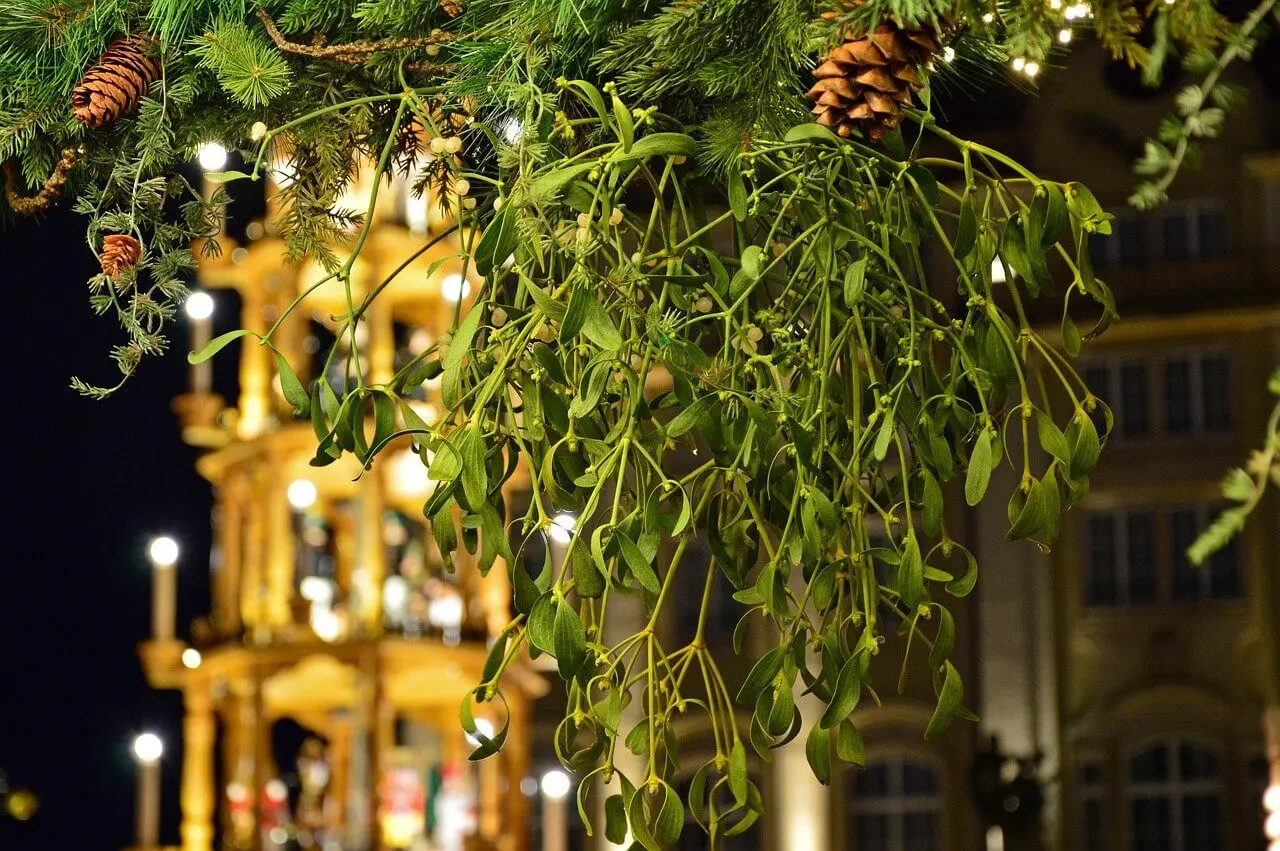How to Include Plants in Your Christmas Decorations

With a little creativity, it’s possible to create Christmas Decorations with ornamental plants and other materials, suitable to captivate the eyes of the guests at your Christmas gatherings.
Lights, bows, flowers, and fruits are some elements that can be embellished with plants that, seasonal or not, enliven the vibes of any celebration. Let’s take a look at how to take advantage of them.
Do plants have a place in Christmas decorations?
A plant by itself enhances the Christmas atmosphere. However, the trend is to complement them with accessories alluding to the season, which elevates the elegance of the interior design in the home, office, or anywhere you want to give a special touch.
In addition, plants increase well-being, filter the air and create a natural environment that transcends the quality of decoration, as explained in an article published by ABC. Especially in the case of a season in which back-to-back gatherings are customary, it would be good to take advantage of the benefits of plant species.
In pots, hanging, and sometimes mixed with artificial versions, plants capture the eye when it comes to Christmas decorations.
Tips to add plants to your Christmas decorations
To decorate with plants, it’s not just necessary to have a natural tree and fill it with bulbs. In fact, there are other ways to incorporate them into Christmas, and this is what we want to show you.
The inevitable poinsettia
The taxonomic denomination of this tropical shrub is Poinsettia and, since ancient times, it has been considered the characteristic plant of Christmas. According to Acta Biológica Marisiensis, the species shows color variations in the cold season. However, it’s its soft red leaves that give it its ornamental value that’s very advantageous in the floral industry.
Poinsettias are usually marketed with growth retardants so that they keep their healthy and decorative appearance. Furthermore, there are also white, yellow, and violet color besides red. If you select relatively small specimens, you can place them in pots in the middle of a table, on the balcony, or sticking out of a vase.

Wreaths on doors
Christmas wreaths are closely related to Advent. As a National Geographic publication explains, these decorations symbolize faith and eternal love for God, as well as caring for others.
They consist of a circle made of spruce branches to highlight the green, associated with hope and life. They traditionally carry four candles for each Sunday of the season, a red ribbon, and crabapples as a promise of salvation.
Placing these wreaths in the space of your choice is a beautiful way to decorate the house for Christmas.
Centerpieces with plants
Keeping the table with a central ornament composed of plants is one method of beautifying the dining room this holiday season. What materials can you use, you might be wondering? Well, here are some ideas:
- Baskets: Filling wicker baskets with holly, pine cones, and spruce pieces works. If the dimensions allow it, add poinsettias.
- Candy bowls: A glass bowl filled with treats, such as red and white canes looks perfect if you surround the outside of the base with a strip of mistletoe.
- Plant stems: These are thinner than branches, making them ideal for small tables. A stem with berries, for example, really highlights a centerpiece.
- Candles: Opting for small samples of ornamental plants, you can make a fountain with a large, pleasant-smelling candle in the middle. Serve branches with fruits and flowers, adding colorful balls, glitter, and stars.
We think you may also like to read this article: How to Make Aromatic Candles from Fruit Rinds
Mini pines
Besides the Christmas tree, tiny pines in the corners of the house give more Christmas spirit. Whether for a coffee table, on a bookcase, or in the bar, these miniature trees guarantee a great touch in the decoration.
If you prefer artificial pines, it’s possible to find models bathed in a kind of snow. They give a more particular effect.

Ornaments with pine cones
Garlands designed with frosted pine nuts look great on windows, frames, or a table. They stand out for their naturalness and their adaptation to any Christmas aesthetic.
Transparent vases are great for using plants in Christmas decorations
Transparent vases lend themselves to decoration if you put the bouquet of your choice and fill the bottom with gold, red or green balls, some nuts, and pieces of fir. Also, illuminating the vases makes them look magical!
Romanticism with mistletoe
We all know what they say about mistletoe and kisses. Having to kiss under the mistletoe is what literature, television, and folk tales suggest; hence the use of mistletoe, or Viscum album, as part of many traditional Christmas ornaments.
Architectural Digest magazine mentions that this plant is believed to attract good luck; this a valuable fact when adding it as part of Christmas.
So, what are some ways to use it? For example, you can hook the mistletoe on the top of the door, under some frame, or as portions of garlands arranged on the ceiling.

Foliage: An extraordinary resource for Christmas decoration
Appealing to dry branches is also valid when it comes to using plants for Christmas decorations. In fact, some people prefer this alternative, considering that the cold weather affects many plant species.
The foliage of fir and eucalyptus trees is used to assemble floral compositions, adding ribbons, colors, or paper specimens that complement wreaths, baskets, and garlands.
Like this article? You may also like to read: How to Deliver Christmas Gifts in a Fun Way
Is it possible to use plants that don’t allude to the season for Christmas decorations?
Just because it is Christmas doesn’t mean that all the plants in your decoration have to be symbolic of the season. Thus, conventional fresh flower arrangements are fine, too.
Persian violets, lilies, and snowdrops work well for Christmas Eve ornamentation. However, roses also play a starring role in these festivities; the secret is to choose colors, fragrances, and aspects that lend themselves to the motif of the setting.
All cited sources were thoroughly reviewed by our team to ensure their quality, reliability, currency, and validity. The bibliography of this article was considered reliable and of academic or scientific accuracy.
- Bálint J, Bandi A, Buta E, Csorba C, Domokos E, Molnár K, Tatár M. Efectos de los retardadores de crecimiento en el desarrollo de la variedad flor de pascua “sentimiento navideño”. Acta Biológica Marisiensis. Rumania; 2021. Vol. 4. Núm. 2. pp. 32-38. https://sciendo.com/pdf/10.2478/abmj-2021-0011
- ¿Cuál es el origen de la Corona de Adviento? National Geographic. España; 2018. https://www.ngenespanol.com/culturas/corona-de-adviento-cual-es-el-origen-y-significado-de-esta-tradici/
- Mora G. 5 plantas de Navidad que puedes tener en casa a partir de noviembre. Architectural Digest. España; 2021. https://www.revistaad.es/decoracion/jardines-y-plantas/articulos/plantas-de-navidad-en-casa
This text is provided for informational purposes only and does not replace consultation with a professional. If in doubt, consult your specialist.








